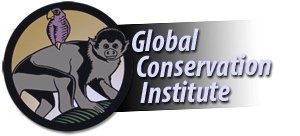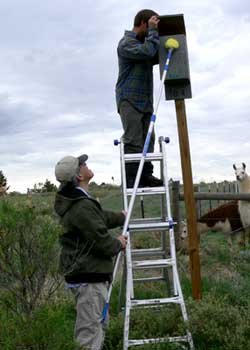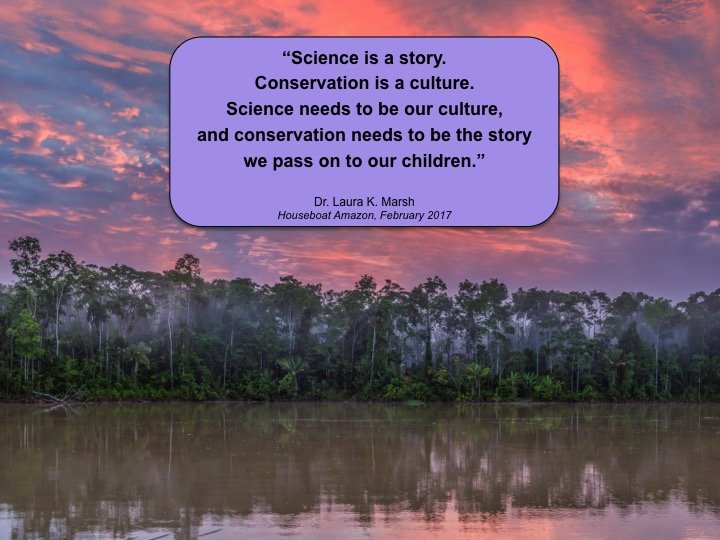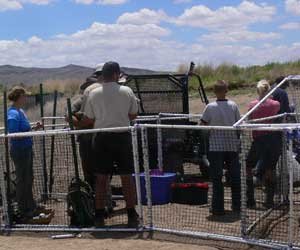WHAT WE DO
RESEARCH
Wild animals are an integral part of the complex interrelationship between humans and the environment. In order to conserve habitat and wildlife, we work from multiple arenas to better understand both animal behavior and human behavior, such that the two may mutually benefit. This is done through a variety of projects involving mammals, plants and birds with a particular focus on disrupted or fragmented habitats.
Our research goal is to build on the collective breadth of science by using multi-disciplinary tools such as statistics, modeling, population biology, taxonomy, and molecular biology combined with ecological principles to answer questions important to wildlife conservation.
GLOBAL HEALTH
One of our focuses at Global Conservation Institute is on international health issues and the interconnectedness of human and animal health to the environment. The majority of emerging diseases are considered zoonotic, having both animal and human hosts, and of those an estimated 72% of emerging diseases have a wildlife component. All emerging diseases circulated within animal populations prior to human infections.
On a global scale, there has been a significant increase in emerging disease events where most of these examples are incompletely understood from a scientific and medical perspective. Agricultural animals play a critical component in the ecology of infectious diseases, as they have close contact with humans and possible contact with wildlife and the environment. Agricultural animals may also play a significant role in disease evolution through host differences and exposure to antimicrobials. Conservation of wildlife species and the environment is a public health issue.
ECOLITERACY AND ECOFLUENCY
This arm of GCI’s work focuses on the public “application” of science. It involves understanding and using environmental principles. ‘Literacy’ is defined as the ability to read and write. Applied to ecoliteracy, this means having a basic understanding of “the reading and writing” of the environment around you. ‘Fluency’ means spoken or written with ease. As applied to ecofluency, it means being comfortable with knowledgable about the environment. Key to embracing ecoliteracy is the concept of “rewilding,” which we will discuss in detail on our Sandwalk Podcast.
When considering the audiences for ecoliteracy, one is students grades K-12; another is the general public; a third is politicians; and a fourth is those involved in business. While some key environmental messages conveyed to these audiences may be the same/similar, how they are conveyed will differ as the groups are motivated by different things – and play a different role in terms of behavior change that drives the need for ecoliteracy.
Focusing on the ecoliteracy of students is a basic, long-term strategy - aimed at ensuring that values about the environment that influence our everyday behaviors will be based on an understanding of how ecosystems, like rainforests, are closed systems. And, how any action affecting the system in one area, will inevitably affect other areas of the system – the effect of deforestation on climate change being a critical example. Dr. Marsh has many years of experience in this area and is considering how to make additional use of material from Houseboat Amazon and other GCI efforts in classroom settings.
A key strategy for educating the public to improve their ecoliteracy is via social media and film. This was built into Houseboat Amazon’s objectives and design. The team took thousands of still photos and hundreds of hours of video footage that have been and will continue to be shared via blogs, video clips HBA’s channel with Ecostreamz. This is a key focus for HBA to ensure that the vast amount of material collected during HBA’s scientific expedition in 2017 is used to its fullest for the public in addition to the publication of scientific results.
Catching turkey vultures on the Pajarito Plateau.
Approaches to ecoliteracy among business people and politicians requires careful consideration of what motivates them to make the decisions they do, how this affects the environment, and what’s the most effective means of them acquiring enough information to understand, and consider, the consequences of their decisions.
The current political climate in which anything labeled as “science” has become suspect in the eyes of some, places additional challenges on efforts to improve global ecoliteracy. To systematically address this, GCI plans to develop a series of podcasts/video clips that incorporate HBA findings and other GCI research material. A key purpose of these materials would be to help demystify science, partly through clarifying that - while “scientists” professionally engage in systematically answering questions about the physical and natural world through observation and experiment, everyone engages in “science” through their own observations and testing of personal daily theories. In essence, people often act like scientists but don’t know it, by asking and answering questions and making decisions based on what their answers mean.
Citizen science forms a bridge when members of the general public help collect and analyze data relating to the natural world as part of a collaboration with professional scientists. GCI hopes to continue to build that bridge of communication and understanding between decision makers (scientists, business persons, politicians) and the public.




